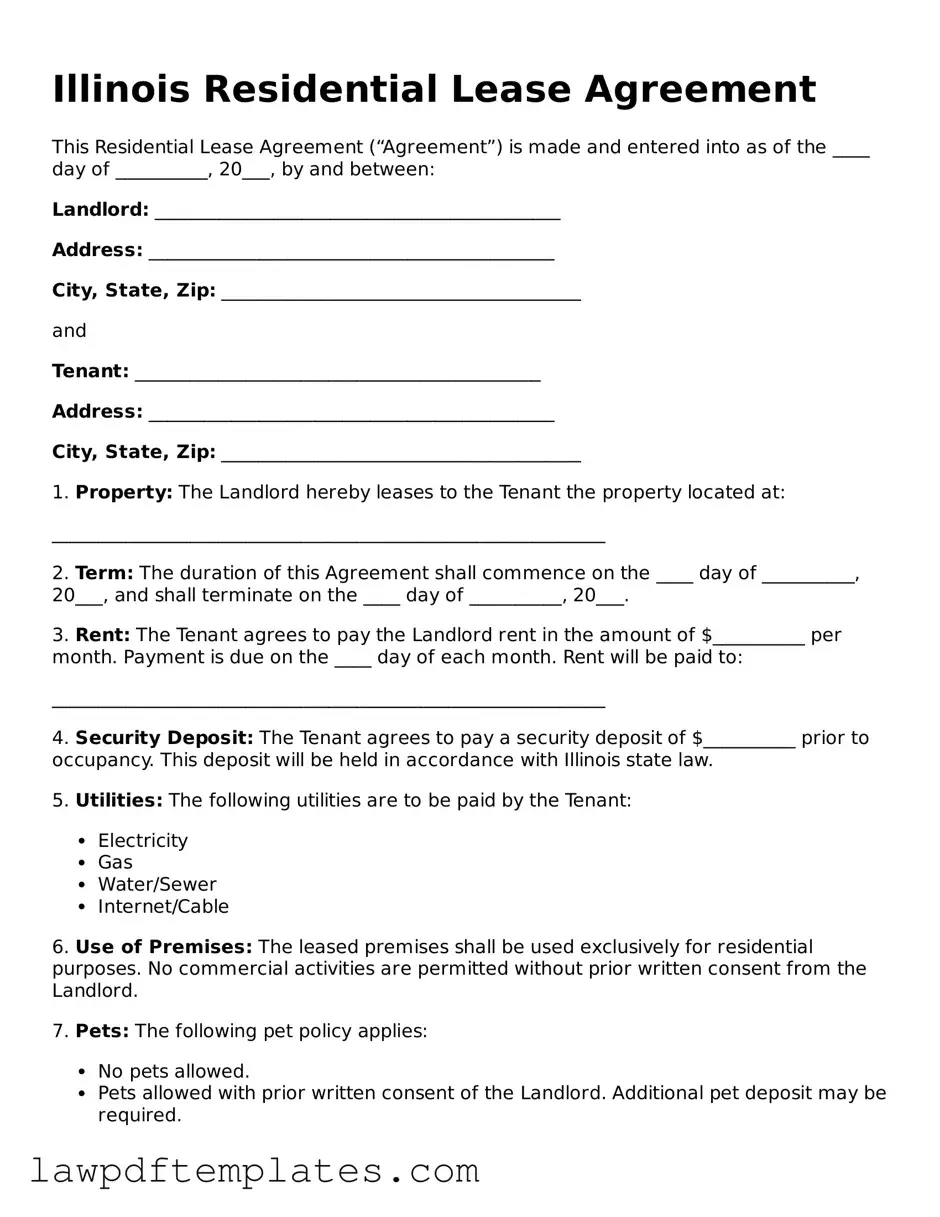Illinois Residential Lease Agreement
This Residential Lease Agreement (“Agreement”) is made and entered into as of the ____ day of __________, 20___, by and between:
Landlord: ____________________________________________
Address: ____________________________________________
City, State, Zip: _______________________________________
and
Tenant: ____________________________________________
Address: ____________________________________________
City, State, Zip: _______________________________________
1. Property: The Landlord hereby leases to the Tenant the property located at:
____________________________________________________________
2. Term: The duration of this Agreement shall commence on the ____ day of __________, 20___, and shall terminate on the ____ day of __________, 20___.
3. Rent: The Tenant agrees to pay the Landlord rent in the amount of $__________ per month. Payment is due on the ____ day of each month. Rent will be paid to:
____________________________________________________________
4. Security Deposit: The Tenant agrees to pay a security deposit of $__________ prior to occupancy. This deposit will be held in accordance with Illinois state law.
5. Utilities: The following utilities are to be paid by the Tenant:
- Electricity
- Gas
- Water/Sewer
- Internet/Cable
6. Use of Premises: The leased premises shall be used exclusively for residential purposes. No commercial activities are permitted without prior written consent from the Landlord.
7. Pets: The following pet policy applies:
- No pets allowed.
- Pets allowed with prior written consent of the Landlord. Additional pet deposit may be required.
8. Maintenance and Repairs: The Landlord is responsible for maintaining the premises in good condition. The Tenant will promptly report any needed repairs to the Landlord.
9. Termination: Either party may terminate this Agreement upon providing at least 30 days written notice prior to the lease end date.
10. Governing Law: This Agreement shall be governed by the laws of the State of Illinois.
IN WITNESS WHEREOF, the parties hereto have executed this Agreement as of the day and year first above written.
Landlord Signature: ____________________ Date: ____________
Tenant Signature: ______________________ Date: ____________
